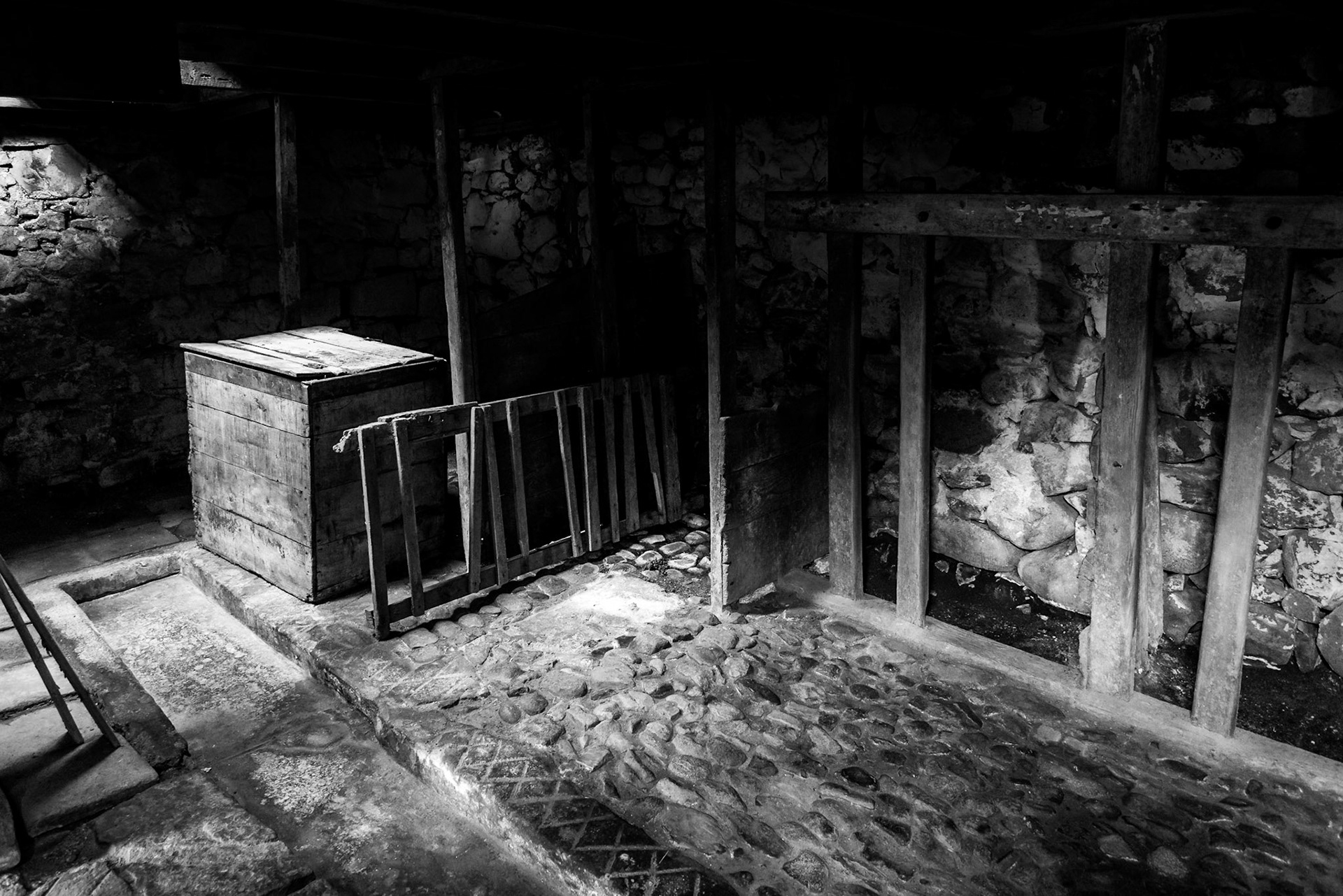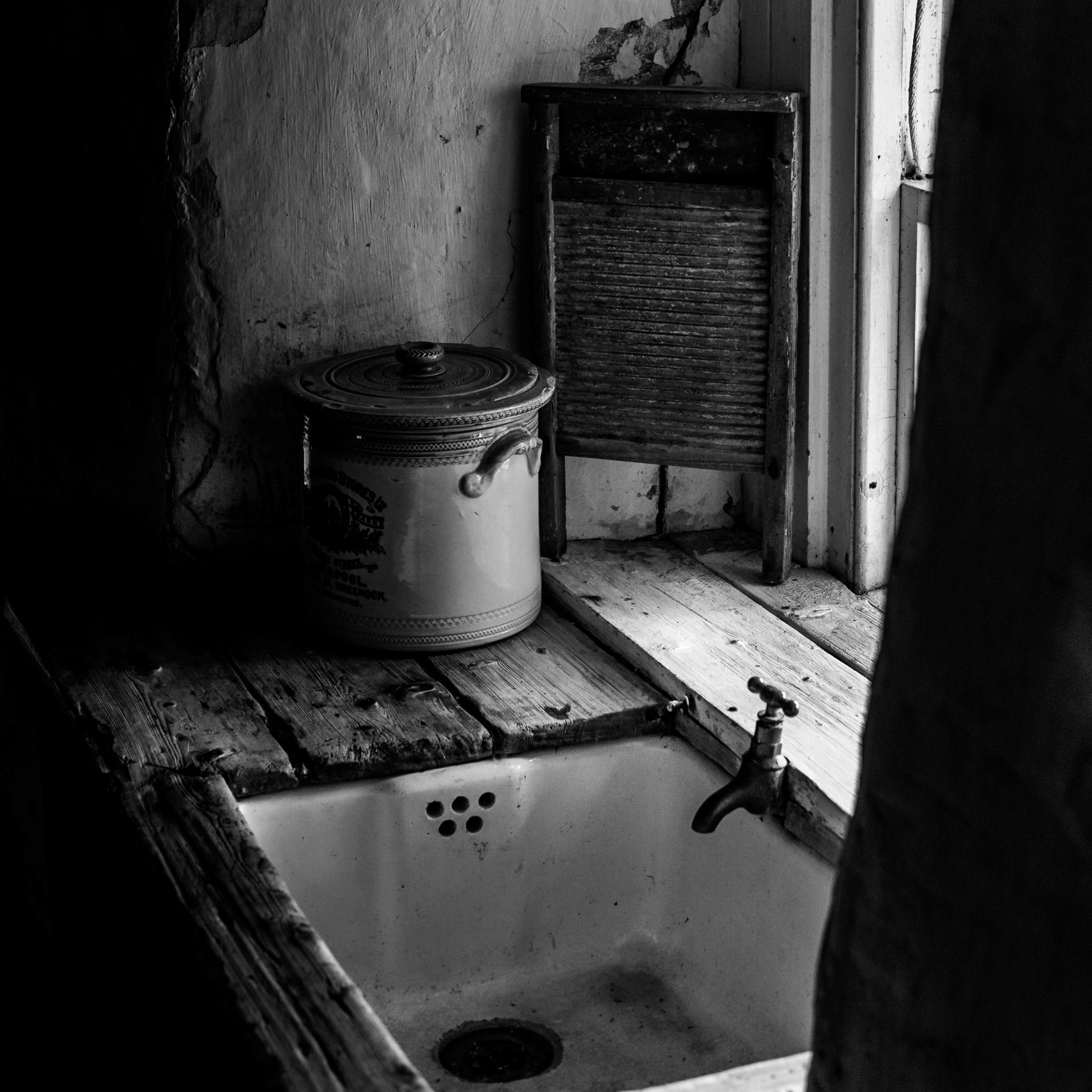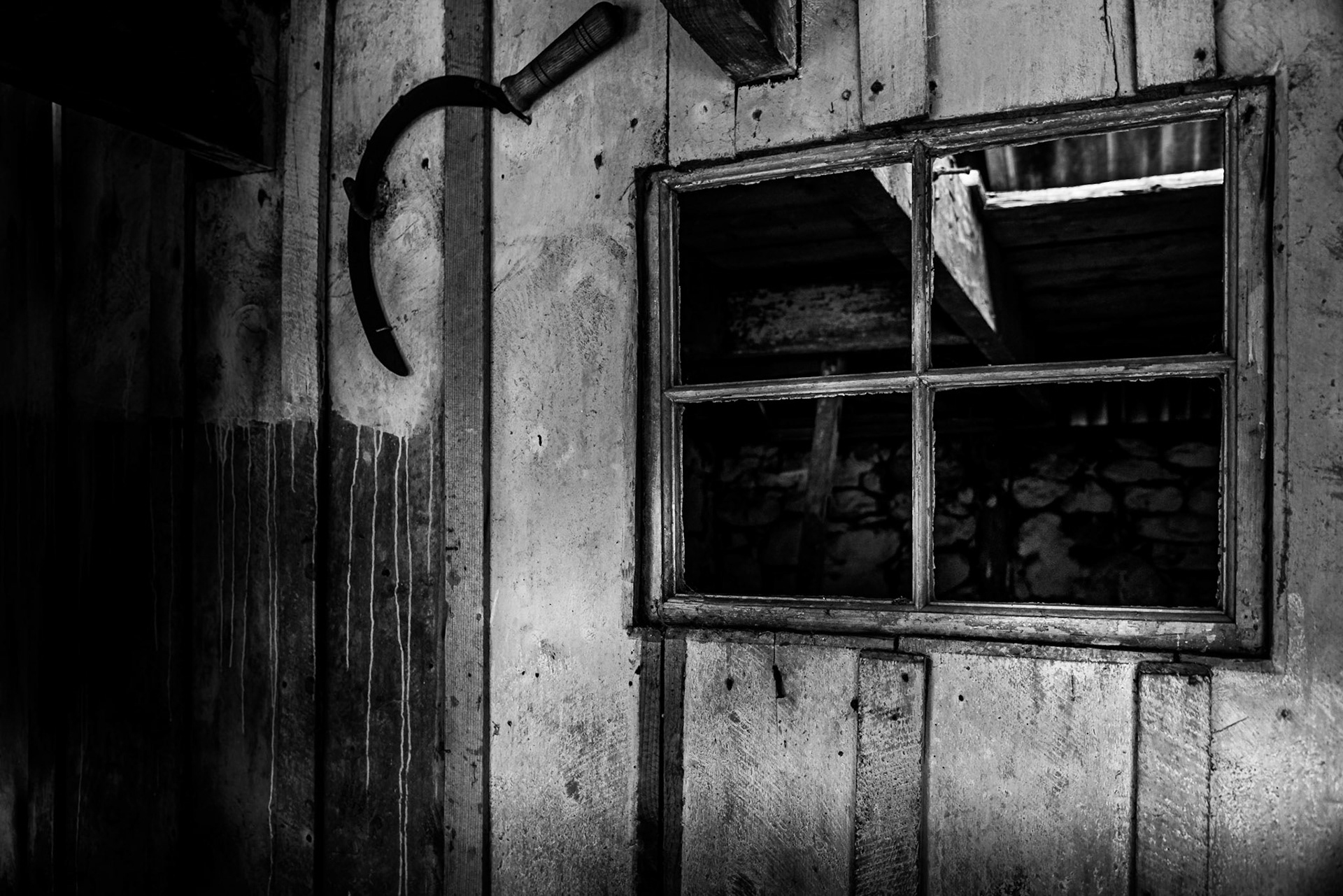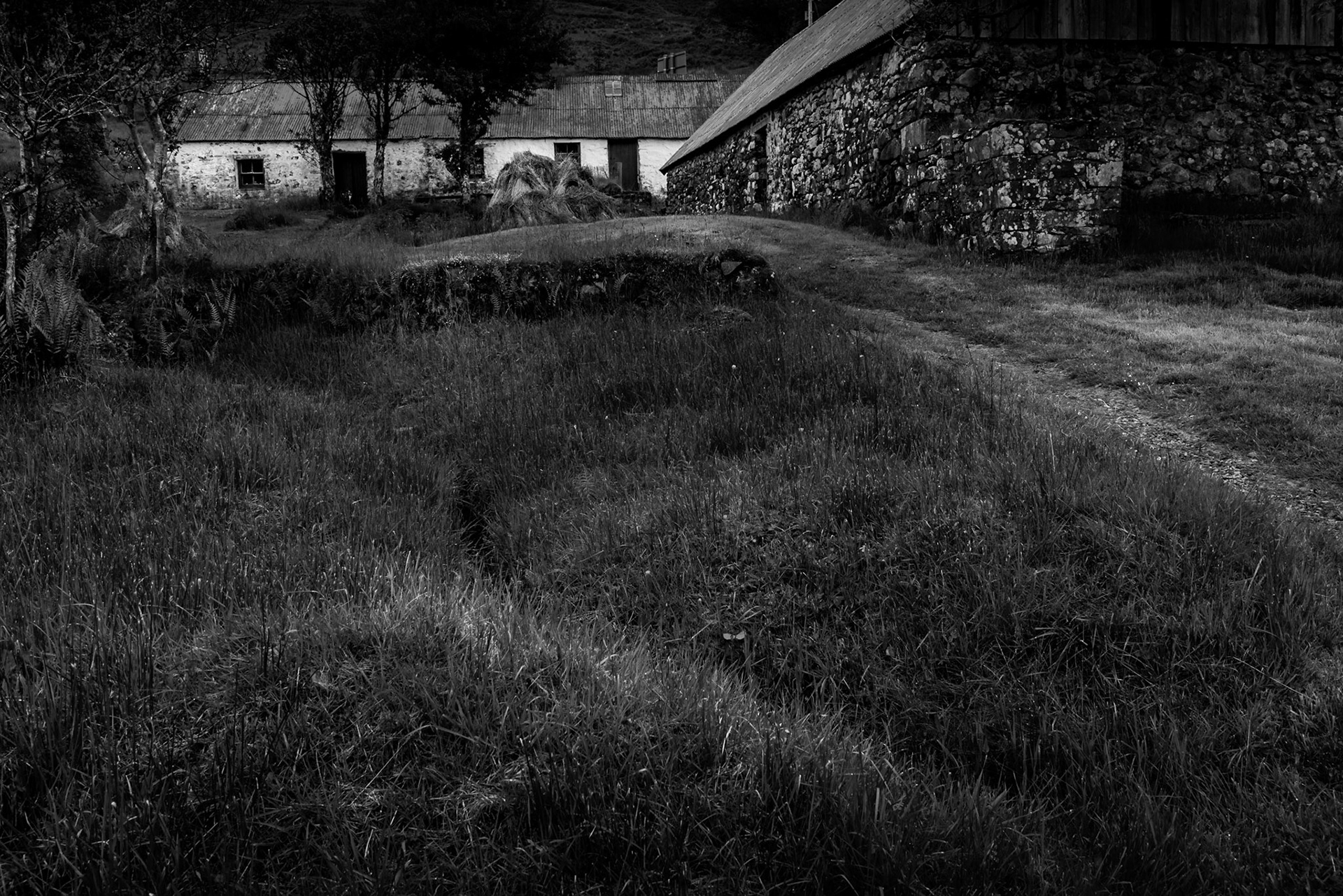Auchindrain (Gaelic: *Achadh an Droighinn*, meaning “field of the thorn tree”) sits quietly in the West Highlands of Scotland, a place shaped by centuries of hardship, resilience, and slow, inevitable change. Founded in the late 15th century, it would have been one of many similar settlements—a township built on communal farming and shared labour, part of a social fabric once woven tightly across the Highland landscape.
In 1789, plans were drawn up to “improve” Auchindrain, part of the widespread agricultural reforms that reshaped rural Scotland. But unlike so many other places, the plan was never carried out. The township endured. While nearby Achnagoul was abandoned by the 1940s, Auchindrain lingered on, gradually emptying, until by the 1950s only two households remained. When the last tenant retired in 1963, the value of what had survived was finally recognised. Though most of the surrounding land was sold for forestry in 1967, the core of the township—its buildings, layout, and memory—was preserved. Since 1968, Auchindrain has operated as a working museum, and today it stands as the only Highland township to survive more or less intact from the hundreds that once dotted the region.
I visited Auchindrain in June 2019, on a day that could hardly have been more typically West Highland: overcast, damp, and quietly melancholic. The low light, drifting mist, and sodden ground seemed to deepen the sense of place—more evocative, perhaps, than blue skies ever could have been. The weather echoed the weight of history here, soaking into stone walls and earthen paths like memory itself.
This series of black and white photographs is an attempt to capture not just the physical remnants of Auchindrain—the slate roofs, rough stone walls, soot-streaked interiors—but something of its spirit. My aim is not to document in a historical sense, but to invite reflection. To offer a space where viewers might imagine lives once lived within these walls and fires once lit on these hearths. Not necessarily the specific stories of Auchindrain, but those of the countless other townships that have been lost to time, clearance, and so-called progress.
The Highland Clearances left a lasting scar on the landscape and on Scotland’s cultural identity. Communities were broken, ways of life swept aside, and the land itself reshaped to serve new economic realities. Today, places like Auchindrain stand as quiet reminders—not just of what was lost, but of what still remains if we choose to look closely.
In monochrome, stripped of colour and distraction, the textures of time—stone, wood, earth—come to the fore. These images are my way of honouring that quiet endurance, and of bearing witness to a way of life that, though gone, still speaks.












